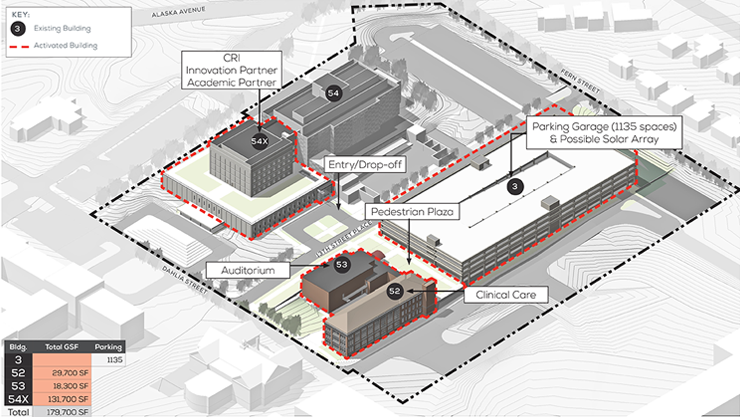On November 17, 2016, Children’s National Hospital signed an agreement with the U.S. Army to accept the transfer of nearly 12 acres of land from the Walter Reed Army Medical Center property in Northwest Washington, D.C.—an acquisition that nearly doubles the health system’s footprint in the city. Since then, efforts have been ongoing to transform this former military facility, last active in 2011, into a world-class hub for pediatric research, innovation and patient care.
Children’s National is currently working with Elkus Manfredi Architects and Array Architects to restore and retrofit the existing buildings on the site. Plans are already in place to transform the Armed Forces Institute of Pathology, a large laboratory research facility of about 348,000 feet, into a state-of-the-art research and innovation center. Upcoming renovations to the former Post Theater, a conference center and auditorium, will allow the Children’s Research Institute (CRI), their innovation partners and the surrounding community to support Children’s National Hospital’s education mission. Building 52, a former warehouse and outpatient clinic, will house outpatient, pediatric primary and some specialty services. And the Rumbagh parking garage will be refurbished with new LED lighting and solar panels and updates to make this facility compliant with the Americans with Disabilities Act.
"This new space not only provides a venue to expand patient care and research operations," says Vittorio Gallo, Ph.D., chief research officer for the health system and scientific director for CRI. "It also makes it easier to form new partnerships with leading universities, top research organizations, and influential regulators such as the National Institutes of Health and the U.S. Food and Drug Administration."



